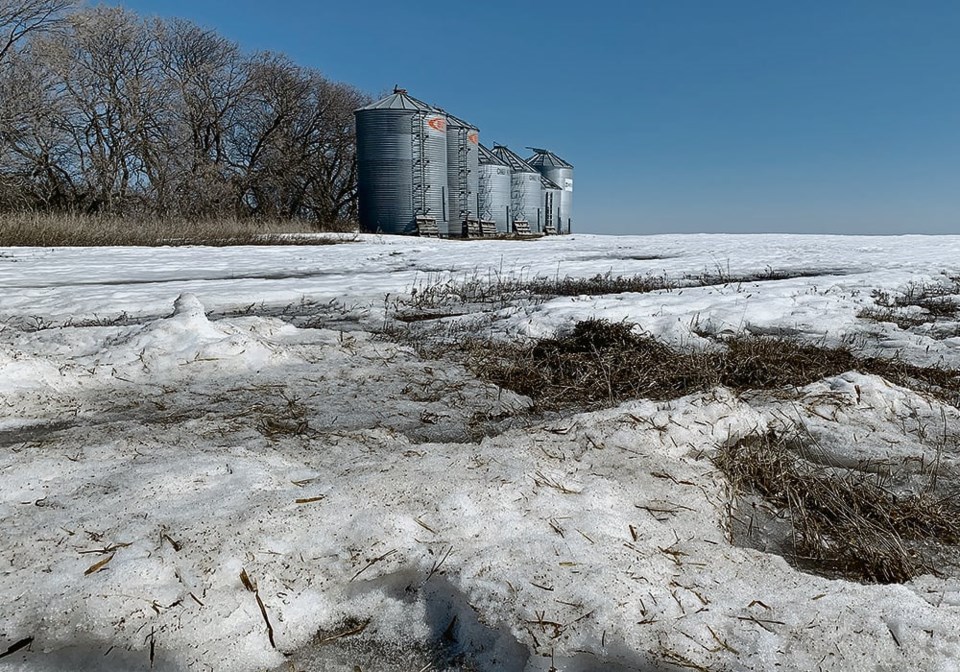WESTERN PRODUCER — In the first half of March, a modest rally in the grain futures lifted prices off what appears to have been the seasonal low, but traders seem reluctant to drive prices significantly higher.
A month ago I wrote about that would spark a short-covering rally. It seems that the big funds that dominate trade finally decided С����Ƶ heavily short — that is, betting that prices would fall — was too risky going into the spring seeding campaign when weather is always
The trade bought back their short positions, took the profits and lessened their risk.
But this did not create a hot upward rally.
Even news March 28 that American corn growers planned to plant fewer corn acres than expected failed to generate an extended rally.
So what else is happening in the world that could push the grain market up or down? There are no urgent red flags, but lots of things to monitor.
Markets are aware of dryness in some areas of North America, but it is too early for alarms to ring. The Canadian Prairies welcomed the moisture delivered by recent spring snow storms but overall, large parts of the region remain in drought.
In the United States Midwest, the focus of drought concern is Iowa, but eastern parts of Nebraska and Kansas are also in moderate drought. The area is getting some rain this spring, which might help prepare fields for seeding, but totals are not enough to change the drought designation.
Weather models for spring show generally normal rainfall for the Canadian Prairies. They show the U.S. Midwest could be dry for the first half of April and then see rain in the second half of the month. May and June look to have mostly normal rain amounts.
But it’s the models’ temperature forecasts that stand out. They show warmer than normal averages all over the North American continent through the spring and into summer. That could make for a speedy seeding season, but it could also increase evaporation and crops’ moisture needs.
In the southern Plains, the U.S. hard red winter wheat crop is doing well so far.
The models can been seen here: https://www.cpc.ncep.noaa.gov/products/international/nmme/nmme_monthly_body.html
Crops in large parts of Europe and the United Kingdom have endured a wet winter and spring. EU crop monitoring service MARS on March 29 said most winter-seeded crops were mediocre. France’s agriculture department said soft wheat conditions were the worst since 2020. The wet weather also delayed spring crop planting.
Russia’s winter wheat came through the cold months well and a big crop is expected. It has been dry in southern growing regions. If it continues, that would raise concern.
Russia’s Grain Union recently reported that growers had almost doubled their durum area, which could lead to production of more than two million tonnes, up from about one million last year.
Russia’s wheat exports of the 2023-24 wheat crop are booming, which is a damper on global wheat prices.
Last week some ships carrying Russian grain were delayed because of phytosanitary issues, but that will likely have little impact on overall exports.
Also the war between Ukraine and Russia is heating up again, increasing Black Sea grain export risks, so that added a little support to wheat prices.
Soybean exports from the newly harvested С����Ƶ American harvest are hot and that is keeping a lid on oilseed prices. Brazil’s second corn crop is in the field and progressing nicely.
I have seen no indication that there is a problem with China’s winter wheat crop.
Global economic conditions can also affect crop markets.
The biggest question is the timing of when central banks will start to lower interest rates.
Inflation increases in North America and the eurozone have moderated, raising hope that interest rate cuts could start this summer.
Most developed countries have avoided a harsh recession and the United States economy has actually grown strongly, which might affect the timing of rate cuts.
In Europe and Canada there is a strong argument to cut rates very soon to avoid slowing economies too much.
But last week’s U.S. jobs report, with higher than expected job creation and a drop in the unemployment level to 3.8 per cent, indicated an economy still hot and inflation-prone.
So the U.S. central bank might consider waiting a little longer before cutting rates. If Canada cuts rates and the U.S. does not, it could weaken the loonie relative to the greenback.
The strong U.S. economy also signals that energy demand could be stronger than expected, which would support oil prices.
That factor, coupled with increasing tensions between Israel and oil-producer Iran, lifted West Texas crude by about seven per cent last week to m




